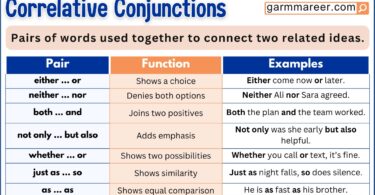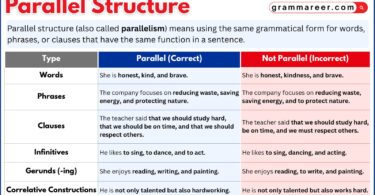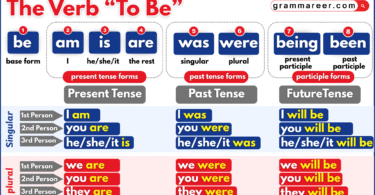Mastering connectors like As Well As and In Order to, and their Urdu meanings can significantly improve your sentence structure and clarity. These expressions help combine ideas smoothly and explain purpose effectively. In this blog post, you’ll learn how to use them correctly with simple English and Urdu explanations. To enhance your skills further, check out our grammar resources.
Table of Contents
Use of As Well As and In Order to
The correct use of “as well as” and “in order to” is essential for forming clear and accurate English sentences. Both phrases add depth to your writing by connecting ideas and expressing purposes effectively.
Use of As well as
“As well as” is used in English to translate Urdu sentences where the meaning of “بھی” (also) appears twice.
It shows that two persons or things are equally involved in a quality or action.
Important: When “as well as” connects two singular subjects, the verb always agrees with the first subject.
Example Sentences:
- Zia as well as Ali is present.
ضیاء بھی حاضر ہے، علی بھی۔ - He as well as his father is honest.
وہ بھی ایماندار ہے اور اس کا باپ بھی۔ - Aslam as well as Saleem went to the fair.
اسلم بھی میلے میں گیا اور سلیم بھی۔ - Rabia as well as Tahmina is intelligent.
رابعہ بھی ذہین ہے اور تہمینہ بھی۔ - The students as well as the teacher are absent.
طلبہ بھی غیر حاضر ہیں اور استاد بھی۔ - She as well as her classmates is talkative.
وہ بھی باتونی ہے اور اس کی کلاس فیلو لڑکیاں بھی۔ - He as well as his friend is intelligent.
وہ بھی ذہین ہے اور اس کا دوست بھی۔ - My brother as well as I am going to the party.
میرا بھائی بھی پارٹی میں جا رہا ہے اور میں بھی۔ - Sara as well as her sisters loves painting.
سارہ بھی تصویریں بنانے کی شوقین ہے اور اس کی بہنیں بھی۔ - The manager as well as the employees is working hard.
منیجر بھی محنت کر رہا ہے اور ملازمین بھی۔
Use of In order to
“In order to” is used to express a purpose or a result in a sentence.
It is similar to saying “to”, “so that”, or “for the purpose of” in Urdu (تاکہ / کے لیے).
Important: After “in order to,” the base form of the verb (like go, eat, run, study) is always used.
Structure:
Subject + verb + in order to + base form of verb + rest of the sentence
Example Sentences:
- I ran fast in order to catch the train.
میں تیز دوڑا تاکہ گاڑی پکڑ سکوں۔ - She studies hard in order to pass the exam.
وہ سخت محنت کرتی ہے تاکہ امتحان پاس کر سکے۔ - We exercise daily in order to stay healthy.
ہم روزانہ ورزش کرتے ہیں تاکہ صحت مند رہ سکیں۔ - He saved money in order to buy a new car.
اس نے نئی گاڑی خریدنے کے لیے پیسے بچائے۔ - They work overtime in order to earn more money.
وہ زیادہ پیسے کمانے کے لیے اضافی وقت میں کام کرتے ہیں۔ - In order to succeed, you must work hard.
کامیاب ہونے کے لیے تمہیں سخت محنت کرنی ہوگی۔ - I left early in order to catch the bus.
میں جلدی نکلا تاکہ بس پکڑ سکوں۔ - She practices every day in order to improve her English.
وہ اپنی انگریزی بہتر بنانے کے لیے روزانہ مشق کرتی ہے۔ - He eats vegetables in order to stay fit.
وہ فٹ رہنے کے لیے سبزیاں کھاتا ہے۔ - In order to get good grades, students must focus.
اچھے نمبر حاصل کرنے کے لیے طلبہ کو توجہ دینی چاہیے۔
✅ Quick Tips:
- In “as well as,” the first subject controls the verb form (singular or plural).
- After “in order to,” always use the base form of the verb (without -s, -ed, or -ing).
You May Also Like



